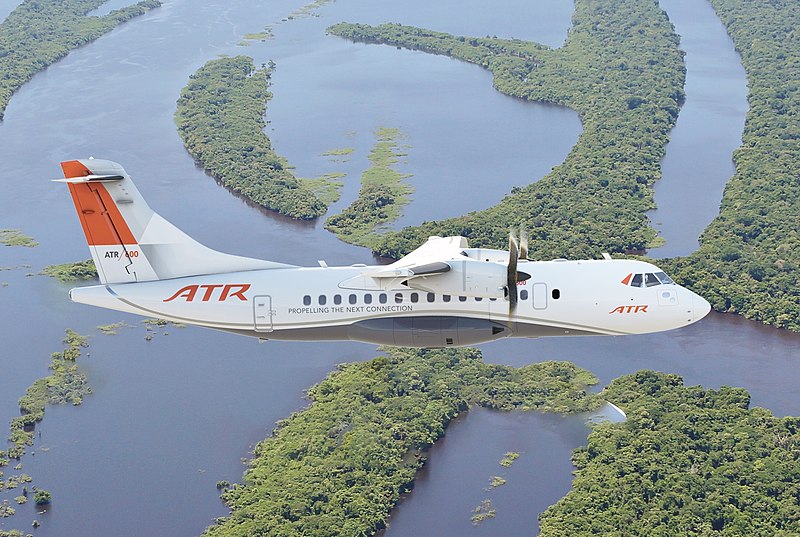Aerospace
How does the ATR-42 water crash land in comparison to the A320 and B737?
This might be the main factor in the 19 people being trapped under the aircraft. #PrecisionAir #Crash #ATR42-500

A passenger plane flight PW-494 from Tanzania crashed into Lake Victoria as it attempted to land in the lakeside town of Bukoba, killing at least 19 of its passengers. When the accident happened at roughly 08:53 local time, the ATR42-500, 5H-PWF, was en route from Dar es Salaam to Bukoba. The flight carried 39 passengers (38 Adults and 1 Infant) together with 4 crew members. The families and relatives of the passengers and crew members who were engaged in this unfortunate tragedy are offered the utmost sympathy by Precision Air.
10 things about Boeing 737 max aircraft.(Opens in a new browser tab)
The incident took place today during a flight over Mwanza from Dar es Salaam (DAR) to Bukoba (BKZ) (MWZ). On the 640-mile journey, the first flight travelled 529 miles, and the second, 111. There were 39 passengers and four crew members among the 43 people in the aeroplane (the ATR 42-500 has a capacity for 48 passengers). The airline operates about 10 ATR turboprops, including the ATR 42 and ATR 72.
Since the Precision Air ATR 42-500 crashed just a few hundred feet from land, local fishermen and rescue workers have been frantically trying to save all on board. Unluckily, 19 of the 43 passengers have been officially pronounced dead, with several of them still trapped within the plane. Tragedies like this serve as a warning that anything can go catastrophically wrong even though flying is incredibly safe. Sadly heartbreaking.
How should I proceed if an aircraft is about to crash? (Opens in a new browser tab)
How does the ATR-42 crash land in comparison to the A320 and B737?
Due to severe weather, Precision Air’s ATR 42-500 overshot the runway and ditched in the lake during the approach. However, there are various technical reasons why some of the passengers can’t escape right away. In this article, we’ll discuss how landing on an ATR 42 differs from landing on an A320 or B737.
US Airways Flight 1549
Precision Air flight plunges into Lake Victoria when landing at Bukoba Airport in Tanzania, authorities say rescue operations underway
?: Courtesy pic.twitter.com/WJLYfGeVjw
— Citizen TV Kenya (@citizentvkenya) November 6, 2022
The 19 passengers who are trapped in the aircraft may be affected significantly by this reason.
Latest Visuals of the Search and Rescue Operations of the crashed Precision Air ATR 42-500 (5H-PWE).#aircraft #safety #aviation pic.twitter.com/q8duFSg9kd
— FL360aero (@fl360aero) November 6, 2022

Aerospace
Boeing Transfers Rocket Stage to NASA, Paving Way for Human Moon Mission

Boeing has achieved a significant milestone by providing NASA with the second core stage of the Space Launch System (SLS) rocket.
This crucial component, crafted at NASA’s Michoud Assembly Facility (MAF), is set to propel the Artemis II crew into lunar orbit, marking humanity’s return to deep space after a 50-year hiatus.
The monumental Boeing-built rocket stage, the largest element of the Artemis II mission, will embark on a journey aboard the Pegasus barge, traveling 900 miles to NASA’s Kennedy Space Center.
Comparison of two legendary aircraft B777x vs B747 aircraft:Click here
Upon arrival, it will be meticulously integrated with other essential Artemis II components, including the upper stage, solid rocket boosters, and NASA’s Orion spacecraft within the iconic Vehicle Assembly Building. This intricate integration process is a vital step toward the eagerly anticipated Artemis II launch, slated for 2025.
“Boeing-built products helped land humankind on the moon in 1969, and we’re proud to continue that legacy through the Artemis generation,” remarked Dave Dutcher, vice president and program manager for Boeing’s SLS program. “Together, with NASA and our industry partners and suppliers, we are building the world’s most capable rocket and paving the way to deep space through America’s rocket factory in New Orleans.”
NASA, Lockheed Martin Reveal X-59 Quiet Supersonic Aircraft:Click here
The delivery of Core Stage 2 marks a significant achievement in the evolution of the SLS rocket. Towering over 200 feet and powered by four RS-25 engines, this core stage, coupled with two solid-fueled booster rockets, will generate a staggering 8.8 million pounds of thrust. This immense power is crucial to launching Artemis II and future missions into the vast expanse of space.
The SLS rocket stands unparalleled in its capability to transport both crew and substantial cargo to the moon and beyond in a single launch. Its extraordinary capacity will facilitate the delivery of human-rated spacecraft, habitats, and scientific missions to destinations including the moon and Mars, ushering in a new era of space exploration.
-

 Travel1 week ago
Travel1 week agoAir India to Expand US Operations with Three New Routes After a Decade
-

 Travel2 weeks ago
Travel2 weeks agoWhy We Should Avoid These Stamps in a Passport
-

 Airlines1 month ago
Airlines1 month agoInvestigations Reveal Fake Chinese Titanium in Boeing and Airbus Jets
-

 Tech4 weeks ago
Tech4 weeks agoChina’s CATL Plans 1,800-Mile Electric Plane Launch by 2027
-

 Airport3 days ago
Airport3 days agoTop 10 Largest Airports in the World by Size
-

 Aerospace4 weeks ago
Aerospace4 weeks agoChina’s Fighter Jets Turn Wings into Autonomous Drones
-

 Airlines4 days ago
Airlines4 days agoAir India Rolls Out A350s for Delhi-New York JFK and Newark Routes
-

 Defence3 weeks ago
Defence3 weeks agoBoeing Enhances Chinook with New Engines and Block II Upgrades at $96 Million







